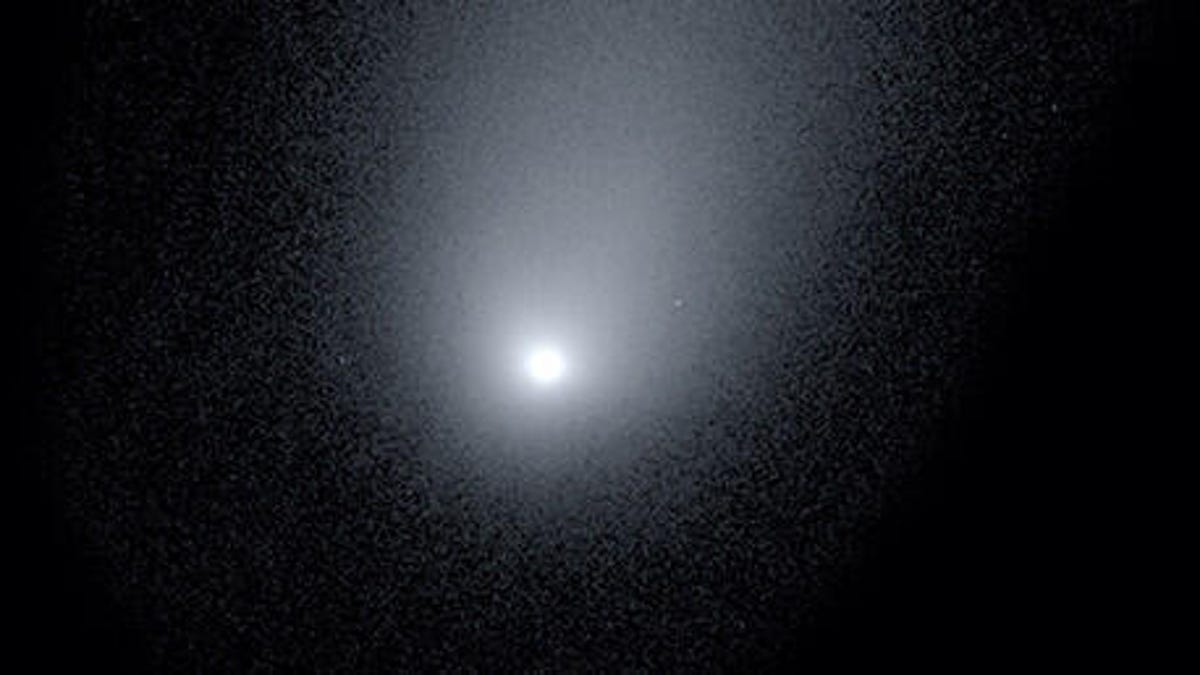Interstellar comet Borisov, visiting from deep space, makes a historic flyby
It's just the second visitor to be spotted from beyond our solar system and it'll never be closer to the sun than it is this weekend.

Interstellar comet 2l/Borisov
A shining comet from beyond our solar system is making its closest approach to the sun on Sunday as it starts its journey back into interstellar space. The landmark object is named comet 2I/Borisov because it's just the second interstellar anything ever spotted in our cosmic neighborhood (hence 2-I). It was discovered by Crimean amateur astronomer Gennady Borisov, who has a track record of spotting new comets, in August.
In 2017, an interstellar object was seen in our solar system for the first time when the bizarre, oblong Oumuamua was discovered. Its odd shape and apparent acceleration as it disappeared into deep space led to all kinds of theories about its origin, prompting a prominent Harvard astronomer to even suggest it might be a product of some alien intelligence.
Unlike comet Borisov, Oumuamua was first seen after it had already made its closest pass by Earth, so there was little opportunity to study it closely. Comet Borisov was observed in August and scientists have already been able to determine it's very different from Oumuamua. It's basically the same as most comets within our own solar system.
Hopefully this latest interstellar interloper will continue to be visible for several more weeks as it continues on its journey. That is, if it doesn't break up and disintegrate as it passes by the sun. That's what happened with eagerly anticipated comet ISON in 2013, which was supposed to be the celestial sight of a lifetime, but fizzled on approach as it was broken apart by the sun's radiation.
2I/Borisov as it appears for viewers at mid-northern latitudes this month, around the time of the comet's closest approach. The view is toward the south about an hour and a half before sunrise. This is when the comet is highest in the sky, at the start of astronomical twilight, the very first predawn sunlight.
Unfortunately, Borisov isn't going to be bright enough for most backyard astronomers to observe, but the pros have already begun to capture some pretty brilliant images on approach, like the one above. If you have access to a telescope with at least a 30-centimeter (12-inch) aperture, you can try hunting for it in the direction of the constellations Corvus the crow and Crater the cup over the next few nights.
On Dec. 28, Borisov will make its closest approach to the Earth, when it finds itself a mere 180 million miles from our planet. Researchers will continue to gather as much data as they can on Borisov as it passes through our neighborhood in the coming months. Astronomers poring over old observations were able to find the comet hiding in data from almost a year ago as it came nearer.
The hope is to eventually trace the comet back to its source, but that could be difficult, as Borisov may be a semi-permanent wanderer, bouncing from one solar system to another.
Ramble on, you dusty old space snowball.
Originally published Dec. 6.

